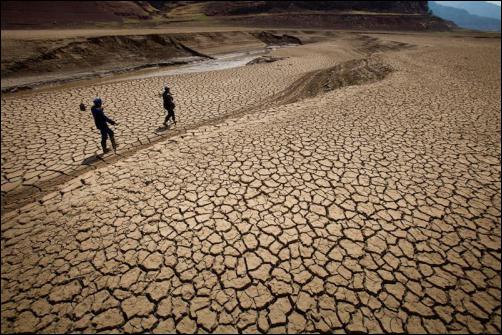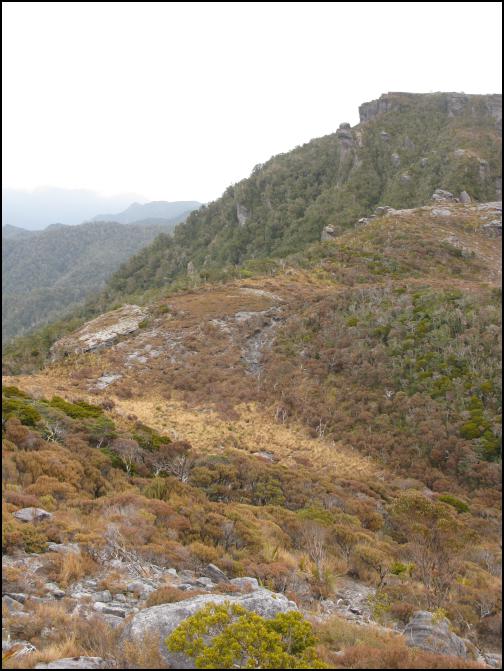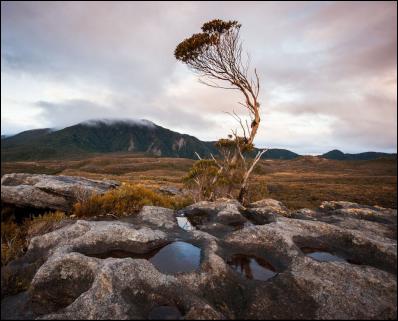Westport: Past, Present And Future
Right of Reply - Coal Action Network
Aotearoa
Right of Reply - Coal Action Network Aotearoa
Part 1 - WHERE - At the Crossroads in Coaltown
Part 2 - WHO - The Pain Of "Uncertainty"
Part 3 - WHAT - Denniston's "Caviar" Of Coal?
Part 4 - HOW - Hamish Bohannan's Hopes for Westport

Coal Action Network Aotearoa
Introduction: One way or another it’s a fact that the past, present and future of Westport and the Buller District is inextricably linked to the ground-covered seams and coal-fields on the lofty cloud-draped plateaus directly outside the township’s front door. On the cusp of a weather bomb that hit New Zealand on June 20, Scoop Amplifier paid a 3-day visit to this enduring part of the nation to begin to gain some on-the-spot perspectives into just how steep a battle the majority of Coasters are facing to find ways to tell the story of their intertwined environmental and economic prospects.
The following opinion piece was solicited from the Coal Action Network one of the activist organisations which has been campaigning against coal mining at Denniston.
Declaration: Scoop Amplifier's production, travel and logistical costs to and from Westport in order to produce this series were paid for by Buller Coal (owned by Bathurst Resources Limited). A strict protocol for the purposes of editorial freedom was agreed. Scoop Amplifier is a business unit of Scoop Media. Please send feedback on this story to WestportStory@scoop.co.nz
Coal, climate change and Bathurst’s financial woes – is this really good for the West Coast?
By Kristin Gillies, Spokesman for Coal Action Network Aotearoa
The recent Scoop series on the prospects for a new coal mine on the West Coast told a great story many of us identify with.
The embattled region in many ways epitomises our story of our nation itself: hardworking, minding its own business, getting on with the job in a number-8 wire kind of way. This is all set in a landscape we all recognise as one of the most stunning in the world. Real Kiwi stuff.
And anyone who has spent any time around unemployment will recognise the relief many in the Westport area have displayed at the news Bathurst Resources have been given a conditional green light to its beleaguered proposal to open a new open cast coal mine on Denniston Plateau.
If Bathurst CEO Hamish Bohannan’s comments in the article are to be believed, then locals have reason to be happy, “At this level of coal production you are talking half a century of mine life in the Buller, and employment of several hundred miners and environmental remediation workers. The key to delivering this, according to Bohannan, will be planning”. But planning is exactly what Bohannan, and his supporters, are not doing. And what are they not planning on? Climate change.
Climate change is changing the way the world does business, right now. It doesn’t matter what you personally might consider to be the urgency, the transition to a low-carbon world is well under way, and is driving investment and job creation all around the world. The Carbon Tracker articulates a growing realisation that over-investment in fossil fuels is creating a speculative bubble.

Drought, China. The developing world will be driven into poverty by the impacts of climate change, says the World Bank. Photo: Greenpaece/Liu Feiyue
Report after report from global financial institutions such as HSBC and the International Energy Agency are reaching the same conclusion: that the majority of coal will be left in the ground, if the world wants to keep global warming to below 2degC. In turn, these reports are driving new investment policies by the World Bank, the European Investment Bank and the US Export Import Bank, all away from coal.
In China, a new direction towards cutting pollution and away from its focus on infrastructure means coal consumption is waning and coal mining is struggling to attract capital and retain jobs globally.
In The Westport Story, Part 3, the sole evidence presented for the future of West Coast coal in steel making is from Peter Gunn, an international ‘coal salesman’, who uses ten year old references to back his argument. Echoes of Don Elder make me wonder how long we will continue to believe these outdated ideas?
Bohannan too, while correctly pointing out that coal from Denniston will not be burnt in power plants, seems oblivious to the fact that just as coal for electricity is being replaced by renewable sources, so is coking coal.
We don’t need to look far for evidence. In February, Scoop itself reported New Zealand Steel’s trial of “green coke” developed by Blenheim company Carbonscape from renewable, carbon neutral waste wood, disproving Gunn’s assertion that alternatives don’t exist. This and other similar processes could soon be competing in the market with Buller coal. Canterbury University have developed a pre-stressed laminated timber construction process which is already successfully replacing steel framework in buildings up to six stories high.
These are just two local examples of innovative change that is happening around the world. For a more comprehensive view of the alternatives to coal in steel, former Government Spokesperson on Energy Efficiency and Coal Action Network Aoteaora member Jeanette Fitzsimons, has written this research paper.

Denniston - Debs Martin (Forest and Bird)
A quick glance across the ditch gives a snapshot of the short-term viability of the industry. Financial reports from the major mining companies in Australia all report a grim outlook for global metallurgical coal. BHP Billiton's recent investor presentation notes that alternatives to conventional, coal-intensive steel production are flattening demand.
The increased usage of scrap metal in furnaces, the company warns, will result in lower growth in demand for pig iron while greater production from electric arc furnaces - which use no or little coking coal - are expected to "contribute a significant share of total Chinese steel production by 2030", Marketwatch reported on August 16.
Where China was once the great hope for the coking coal exporters, now BHP Billiton notes that "much of China's future demand growth will be met by domestic coals."
The Chief Executive of BHP Billiton declared that ‘further investment [in the company’s metallurgical coal operations] is much less likely as the record prices we experienced over the past decade, driven by the demand shock, will not be there to support returns over the next 10 years.’
BHP, along with Anglo American, and Rio Tinto have all recently announced the closure or mothballing of metallurgical coal mines in Australia. There is no shortage of cheap coking coal on the international coal market with which Buller coal must compete - and Hamish Bohannan is pulling the wool over West Coasters’ eyes with claims of jobs and prosperity for all. The economics just don’t stack up.
Rather than listening to political grandstanding and bold claims, we should let Bathurst’s record do the talking. It’s no secret Bathurst, who have never mined coal before coming to NZ, are losing money fast. Mining at Cascade hasn’t reached predicted levels, the Mine Manager and contract staff have been let go, and Health and Safety inspectors issued a work prohibition notice in February as the steepness of mine access roads was endangering workers.
Bathurst is only still in business by the good grace of Westpac who, last September, waived its right to take retaliatory action after Bathurst breached their repayment agreement (see p 81 of the report). Workers at Takitimu in Southland, should be concerned that their mine is security on that loan.
Perhaps by pure coincidence, the day after the Westpac waiver agreement, Economic Development Minister Steven Joyce was slamming environmentalists for using (perfectly legal) means to try to stop the project, and for putting the company at financial risk.
But one has to ask: why is the Government backing a company that is clearly already in a very shaky financial state? And why is Westpac lending them money in the first place?
Even if the Escarpment mine gets the go ahead through the courts the economics of the project are marginal. Capital raising will be the first issue. There has been no mention on recent investor calls of Chinese investment group CITIC who, in 2011, agreed to $40 million in capital for the venture.
Likewise questions must be asked of Bathurst’s other big backer, international steel giant Stemcor who, since agreeing in 2010 to back Bathurst to the tune of USD$50 million, were forced to ask debtors for a stand-down period in repayments to restructure after missing payments on their own $1.2 billion loan. Stemcor is selling off its entire Indian iron ore assets, one of the key markets for Bathurst. On August 28, Stemcor will present its restructuring plan. Will Bathurst’s $50m guarantee be part of this plan now that it’s dumping its Indian iron ore assets? Investors might like to ask Mr Bohannan if his assurances in April - that Stemcor’s backing was solid - still stand.
And if coal is ever won from the project, Bathurst must first pay former owners L&M $US 80 million before the first 100 million tonnes hits the highway. A lot of large numbers for Bathurst to stay afloat.
But whatever the numbers, this mine should not go ahead because, with the looming climate crisis, no new coal mine should. In Scoop’s closing interview Hamish Bohannan makes disingenuous claims that simply cannot go unchallenged. He deliberately misrepresents opponents of the mine with a ‘straw man’ argument and makes unfounded claims for the continued use of coal.
“If we want to get people on this planet who have names and heartbeats and families and loved ones, so that everyone gets a minimum quality of life, then they’re going to need metals, they’re going to need energy, and they’re going to want to have fresh water,” says Bohannan, sounding strangely like Don Elder.
His implication that the climate movement sets out to hold back the development of communities couldn’t be further from the truth. According to a series of World Bank Reports, those poorer communities around the world are likely to be hit hardest by the impact of climate change. This is the very reason the World Bank has made its recent decision to stop its investment in coal, and invest instead investing in renewable energy to help lift the world’s poorest out of poverty and away from climate change.
The Bank’s decision was backed by the US, India and China.
Sustainable community development is at the heart of the movement to stop climate change internationally and nationally. In this light, the recent loss of jobs in the coal industry should be an opportunity to pursue sustainable industry and livelihoods for workers and their families to ensure communities are not left high and dry by the mining industry again in the future.
Fossil fuels have fuelled our development to date but, in the future, coal, the world’s dirtiest energy source, will only make our quality of life worse. New technologies that mean a different trajectory for the world are now not only essential, but possible.
If the global lending agencies acknowledge that climate change will only exacerbate poverty and that renewable energy is the future; if multinational mining companies are struggling to stay afloat; and if our own mining industry has lain off hundreds of workers in recent years…

Air pollution in Beijing: China has recently cancelled a coal fired power station due to air pollution concerns. Photo: Greenpeace/Wu Di
Isn’t it time we stopped supporting coal?
Coal Action Network Aotearoa (CANA) recognises coal as the primary threat to Earth’s climate system. CANA promotes climate justice by advocating and acting for a just transition to an Aotearoa free of coal mining and use.
We do this work in order to open up a space for a sustainable ways of living and organising our societies, so that our future generations will have a thriving planet to sustain them.
ENDS







 Martin LeFevre - Meditations: The Pervasiveness Of Inward Deadness Is Not The Result Of “The Deadening Effect Of The Super-Rich”
Martin LeFevre - Meditations: The Pervasiveness Of Inward Deadness Is Not The Result Of “The Deadening Effect Of The Super-Rich” Peter Dunne: Dunne's Weekly - Removing An Incapacitated Leader
Peter Dunne: Dunne's Weekly - Removing An Incapacitated Leader Gordon Campbell: On A Textbook Case Of Spending Waste By The Luxon Government
Gordon Campbell: On A Textbook Case Of Spending Waste By The Luxon Government Alison Forrest: Whose Values Do You Mean, Winston And Judith?
Alison Forrest: Whose Values Do You Mean, Winston And Judith? Eugene Doyle: It’s Bigger Than NATO And It’s Heading Our Way
Eugene Doyle: It’s Bigger Than NATO And It’s Heading Our Way Ramzy Baroud: Dear West - Your ‘Age Of Monsters’ Has Begun
Ramzy Baroud: Dear West - Your ‘Age Of Monsters’ Has Begun